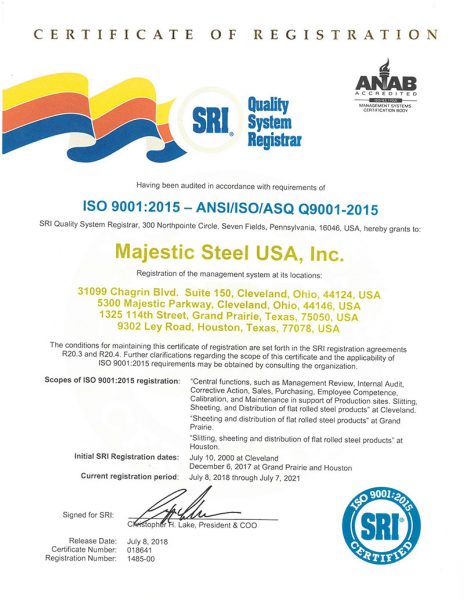Market Update | May 31, 2023
U.S. RAW STEEL PRODUCTION IS AT ITS HIGHEST WEEKLY OUTPUT SINCE LAST AUGUST
U.S. raw steel production continued to move higher last week, climbing to its highest weekly output since last August. U.S. steelmakers produced 1.737 million tons at a 77.2% utilization rate, topping 76% for the fifth straight week. The current YTD utilization rate is at 75.1%, down 3.9% compared to the same time last year.
Input Costs
Zinc pricing continued to move lower this week, down for the fourth consecutive week.
-
-
Zinc pricing came in at $1.04/lb this week, down from last week and at its lowest level in more than two years.
-
After the run up over the previous three months, spot iron ore pricing has dropped sharply of late.
-
- Spot iron ore pricing is currently at $98.85/mt, down about 2% from last week and down about 15% from the start of the year.
- Iron ore pricing is back below $1.00/mt for the first time since around the Thanksgiving holiday.
A slight increase in buying interest from China helped overcome the decreased demand in India which kept coking coal pricing relatively flat this week.
-
- Coking coal pricing currently sits at $222.5/mt, up 0.3% from last week but down 3.9% from a month ago.
-
- Coking coal pricing is still down 42.9% from the recent peak seen in mid-February.
Supply
U.S. raw steel production continued to move higher last week, climbing to its highest weekly output since last August.
-
- U.S. steelmakers produced 1.737 million tons at a 77.2% utilization rate, topping 76% for the fifth straight week.
- The current YTD utilization rate is at 75.1%, down 3.9% compared to the same time last year.
Preliminary import licenses for May (29 days) showed overall steel imports declined 10.0% from April on a daily average.
-
- Import licenses for flat products are pushing higher however, climbing almost 20% from the two-plus year low seen in April.
DEMAND
The demand for mortgage applications declined once again last week, sliding to the lowest level since the end of February.
-
-
Mortgage applications to refinance declined by 7% last week and was down 45% from the same week last year.
- Mortgage applications to refinance declined by 7% last week and was down 45% from the same week last year.
- A jump in mortgage rates, stoked by stronger economic data and fears that the Fed may not lower rates for some time, helped to slow demand
- With home prices starting to regain steam, mortgage rates higher, and inventory levels still well below normal, potential homebuyers are getting hit from all sides on affordability.
-
Manufacturing activity, in the Chicagoland region, dropped sharply, further into contraction in May.
-
-
The May Chicago PMI came in at 40.4, down sharply from 48.6 in April and down nearly 20.0 points from last May.
- This was the largest, month-over-month, decline since April 2020, which was the heart of the COVID lockdowns.
- Any reading below 50 indicates contraction in activity, while any reading above 50 shows expansion.
- The number of components, within the overall index that showed expansion in May was zero.
- This is a sign of a wide-ranging slowdown
-
ECONOMIC
The Conference Board’s Consumer Confidence Index slipped again in May, sliding to 102.3.
-
-
This is down from the upwardly revised 103.7 reading in April.
- The Present Situation Index declined to 148.6, down from 151.8 previously.
- The Expectations Index, based on short-term outlooks, declined slightly, slipping to 71.5 from 71.7 in April.
- The Expectations Index has now been below 80.0 for fifteen consecutive months.
- Extended readings below 80.0 historically point to a recession within the next year.
- Plans to purchase homes in the next six months held steady in May at around 5.6%, but was still notably down from 6 to 7% in Q4 2022.
-
This material, information and analyses (the “Content”) may include certain statements, estimates and projections prepared with respect to, among other things, historical data and anticipated performance. Content may reflect various assumptions by Majestic Steel USA, Inc. concerning anticipated results that are inherently subject to significant economic, competitive and other uncertainties and contingencies and have been included for illustrative purposes. Content is provided AS-IS.

